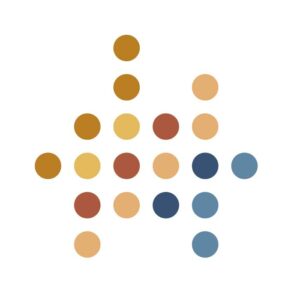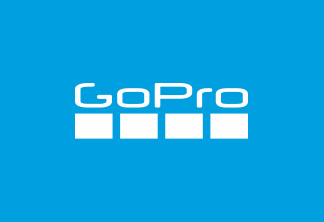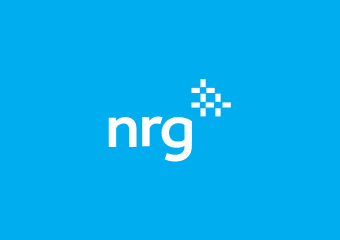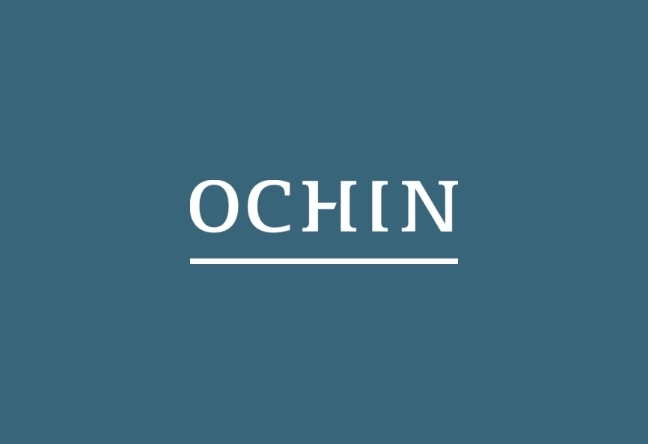You know culture matters, but knowing what efforts are working, which aren’t, and where to focus? That’s the hard part.
Many HR teams are overwhelmed by disconnected data without clear insights. AI helps overcome that challenge, not just by making things more efficient, but also by connecting the dots for leaders.
When used with intention, AI can act as a powerful tool for building cultures that are fair, inclusive, and high-performing. After all, AI should do more than optimize tasks—it should show you what matters. Here’s how you can use AI to empower your key stakeholders with the insights they need to create lasting cultural change.
What Is AI in HR?
AI in HR refers to the use of artificial intelligence, machine learning, and natural language processing technologies to support, enhance, and automate human resources functions—from recruitment to performance reviews.
A recent SHRM study found that 35% to 45% of organizations use artificial intelligence for hiring, and AI adoption is growing. These tools can cut hiring costs by as much as 30% while improving speed and consistency.
HR teams today use AI technology to:
- Automate and streamline HR processes and workflows
- Forecast attrition and performance risks
- Identify engagement and belonging gaps
- Surface inequities in the employee lifecycle
- Personalize learning and development journeys
Over the past few years, these capabilities have helped AI evolve from an efficiency tool into a strategic enabler of culture transformation. But, it doesn’t come without risks. Without intentional design, it can reinforce bias or overlook opportunities to foster belonging. That’s why it’s not just about whether you use AI—but how.
5 Strategic Benefits of AI for Inclusive HR Teams
When applied with purpose, AI can help HR teams make more fair, data-driven decisions across every stage of the employee experience. Here are just a few of the ways it can elevate your work:
1. Identify and Address Bias in Hiring
Unconscious bias can quietly shape hiring outcomes, even in well-intentioned processes. Unfair hiring practices—even if unintentional—not only result in bad hires but can also undermine company culture.
Tools like Paradigm’s Culture for Everyone Platform can analyze applicant tracking data to detect disparities in conversion rates by race, gender, veteran status, disability, and more. With that visibility, HR teams can proactively redesign hiring systems to ensure fairer and more consistent merit-based outcomes.
2. Uncover Hidden Barriers to Engagement
A positive workplace culture is vital for both company and employee performance. Research shows that companies with a strong workplace cultures outperform the market by 16.5%, and culture alone can account for 26.6% of employee performance.
But culture doesn’t drive impact in a vacuum. Employee engagement is the other half of the equation, and it’s deeply intertwined with how people experience your culture. According to Gallup, highly-engaged employees enable their companies to outperform their peers globally.
The question is no longer if engagement matters, it’s for whom does engagement matter today, and why might it differ across groups?
It’s one thing to measure engagement at a company-wide level. It’s another to uncover the inclusion gaps that shape engagement in the first place. Because lower engagement negatively impacts individual, team, and overall business performance, it is critical for companies to go a level deeper.
AI tools like Paradigm’s integrate data from your HRIS, engagement surveys, and people analytics to highlight how different groups experience your culture. You get a clear view into inclusion gaps—such as which teams feel disengaged, where psychological safety is low, or who is leaving at higher rates—so you can take informed, targeted action and create a stronger culture for everyone.
3. Create Cost Savings Through Culture Efforts
Great cultures don’t just create a sense of belonging, they impact business outcomes too.
Companies that foster belonging at work see a 56% increase in job performance. Thanks to a 50% drop in turnover risk, they also experience a decreased need to hire and train replacements. For a 10,000-person company, that can mean up to $52 million in savings per year.
Clearly, inclusion isn’t just a people strategy, it’s a business imperative.
4. Measure Cultural Maturity Across Key Domains
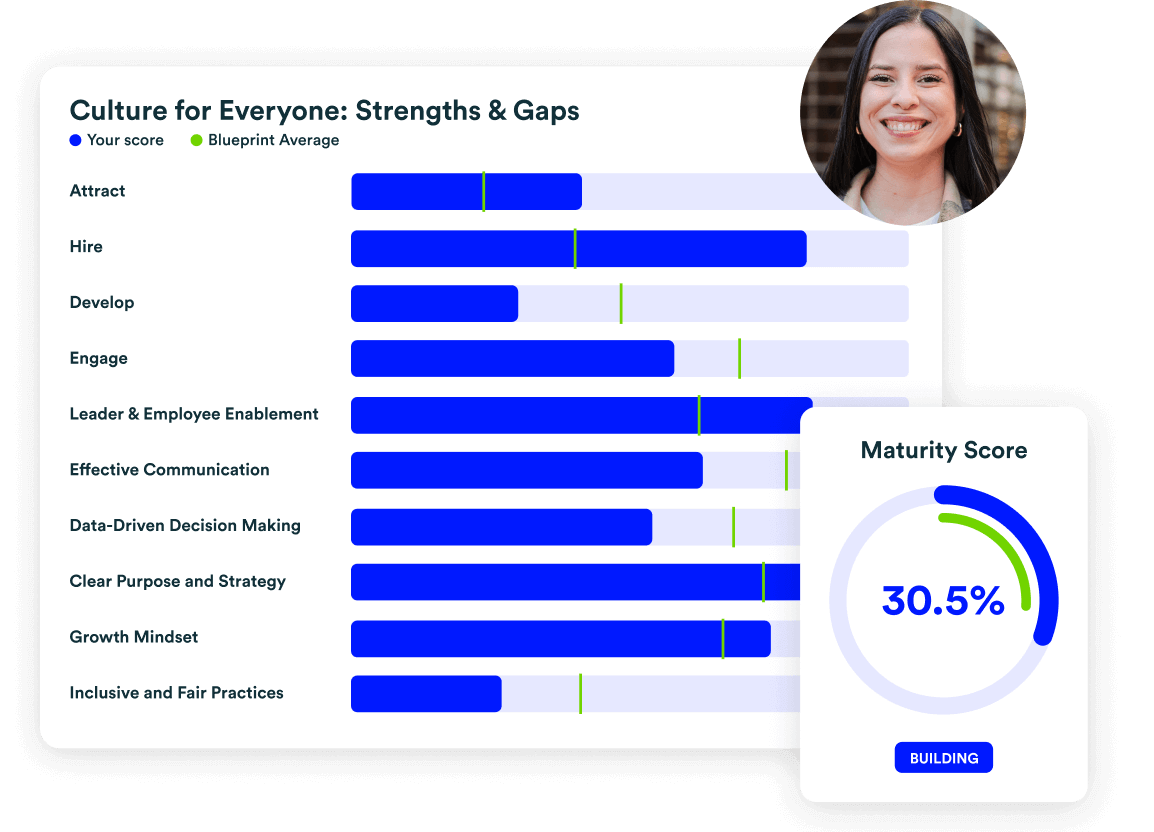
HR leaders often know where they want to go, but not where they are.
Paradigm’s AI intelligence layer benchmarks your organization’s maturity across ten core domains of organizational health. Then, the platform gives you the blueprint to improve, including the insights you need to set a strategy, the tools to track your growth over time, and the ability to compare your progress to peers in your industry.
5. Generate Tailored, Data-Driven Recommendations
Even with great data, knowing what to do next can be a challenge.
Paradigm’s AI-powered platform delivers targeted, science-backed recommendations based on your organization’s unique opportunities. From improving onboarding to redesigning performance reviews, you get clarity on where to focus to make meaningful culture change.
The platform also supports personalized learning journeys, offering tailored workshops, educational resources, and AI-assisted guidance that result in measurable impact.
How Top HR Teams Use AI Across the Employee Lifecycle
The benefits of AI in HR are powerful, but only if those insights translate into action. Paradigm’s Culture for Everyone platform helps you move from data to impact across every stage of the employee experience.
Here’s how top HR teams can use Paradigm’s AI capabilities to drive real change across the talent lifecycle:
Recruiting and Talent Acquisition
The challenge: Many hiring processes unintentionally give advantages to certain groups over others, and traditional metrics rarely show you why.
How Paradigm helps you build a better hiring process that results in the best possible candidate getting the job:
- Sync ATS data to uncover disparities in sourcing, screening, interview conversion, and offer rates.
- Identify where bias enters the hiring funnel, such as in job descriptions or recruiter outreach.
- Implement structured interviews and sourcing strategies.
- Monitor real-time changes by demographic groups, from gender to veteran status to age.
Outcome: Increased representation and reduced disparities in your hiring funnel.
Performance Management
The challenge: Bias in feedback and evaluation is one of the most common and least visible barriers to equity and performance.
How Paradigm makes feedback and evaluation more objective:
- Analyze performance and promotion data to uncover rating inconsistencies.
- Receive guidance on implementing inclusive evaluation frameworks.
- Train managers with science-backed inclusive leadership programs.
Outcome: Clearer and fairer talent management processes and performance decisions, as well as better retention of top talent.
Workforce Planning
The challenge: Strategic planning is only as strong as the data behind it. Most organizations struggle to spot patterns in attrition, promotion, and engagement until it’s too late.
How Paradigm helps you see further, plan smarter, and prevent bias before it starts:
- Integrate HRIS and performance data to uncover attrition or promotion disparities.
- Identify trends by teams, geographies, demographic groups, and more.
- Compare your cultural health to peers’ benchmarks and see how it evolves over time.
Outcome: Data-backed decisions on headcount, promotion readiness, and investment in culture initiatives without relying on hunches.
Employee Engagement
The challenge: High-level engagement scores don’t tell you who is disengaged or why.
How Paradigm gives you a clearer, more inclusive read on your culture:
- Combine survey, HRIS, and process and policy data.
- Identify gaps and areas of disengagement by team and demographic.
- Receive AI-driven, actionable next steps.
Outcome: A culture that truly works for everyone, not just one group.
Learning and Development
The challenge: One-size-fits-all training doesn’t address the diverse needs or barriers your workforce faces.
How Paradigm helps scale inclusive leadership and development across your org:
- Use culture maturity data to identify development focus areas and opportunities for upskilling.
- Empower employees with inclusive, self-paced learning journeys via the Culture for Everyone Platform.
- Track L&D effectiveness through pre- and post-training measurement and engagement.
Outcome: Measurable improvements in leadership effectiveness and employee engagement across all groups.
7 Best Practices for Using AI to Advance Fairness and Inclusion
AI can be a powerful lever for equity, but only when it’s used strategically. Here’s how HR leaders can ensure AI tools support fair, inclusive decision-making across HR tasks.
1. Assess Your AI for Bias Before You Use It
Before implementing AI tools, evaluate the data and assumptions it’s built on. Ask: Who built this? Which data is this trained on? Could it reinforce existing inequities?
AI systems trained on historical HR datasets often replicate past biases, leading to skewed hiring outcomes or inequitable performance predictions. If not addressed, this can erode trust and deepen workplace disparities.
Paradigm trains its AI using trusted research and real-world insights, reducing bias that could creep in from unmoderated sources.
2. Build a Clear Data Governance Framework
AI in HR deals with sensitive personal data. Without transparency and ethical practices, you risk legal exposure and employee distrust—both of which can stall adoption and impact culture.
Start by creating clear data privacy policies that outline how employee data is collected, stored, shared, and used across HR systems. Communicate these policies to employees up front. Ensure your AI solution includes strong governance and security protocols so your team can use its insights responsibly.
You’ll also want to understand how your AI tool uses your company’s data, as some may inadvertently share information through public AI models. Even when anonymized, that data could still pose a risk. Consider switching to a more secure, private tool. For example, Paradigm’s Culture for Everyone Platform keeps your data confidential and accessible to your organization only.
3. Communicate Transparently About AI Initiatives
AI can feel opaque or threatening to employees, especially if it impacts their career growth, performance reviews, or engagement efforts.
Transparency helps increase buy-in and ensures employees feel respected and informed. Encourage a growth mindset and let employees know which AI tools you’re using, what data they draw from, and how those tools influence people decisions like your hiring process and employee engagement initiatives.
4. Move From Gut Instinct to Structured Decision-Making
Unstructured decisions can leave room for bias, even when using AI. Structured approaches support fairness, increase transparency, and build trust. This is especially important for marginalized or underrepresented groups who may be more vulnerable to inconsistent or subjective processes.
Implement consistent, structured criteria for hiring, promotions, and evaluations to base decisions on evidence, not subjective impressions. Along with in-depth inclusive leadership training centered around four pillars of Objectivity, Belonging, Voice, and Growth, Paradigm provides tools and templates for structured interviews, performance reviews, and promotion criteria so leaders can make fair, equitable decisions.
5. Audit AI Outputs Regularly
Even well-designed AI can drift over time. Without regular auditing, HR managers might miss emerging disparities or overlook places where tools aren’t having the intended effect. Reviewing language, not just metrics, helps ensure your tools support both fairness and belonging. To do this:
- Assess how AI-generated insights impact different demographic groups. Are the outcomes fair and equitable across your workforce?
- Audit the language and framing of AI-generated insights. Do the generative AI recommendations reflect inclusive values? Are certain behaviors or outcomes framed in biased or stereotypical ways?
Regular auditing helps you catch issues before they become systemic problems and ensures your AI tools continue to support your inclusion goals over time.
6. Involve Diverse Perspectives in AI Review
Different teams experience your culture in different ways, and that context is essential to interpreting AI outputs accurately. Diverse review teams help surface awareness gaps early and build more inclusive solutions.
Create an internal review group that includes department and business leaders as well as employees from various backgrounds to evaluate the impact of AI tools and processes. Use insight dashboards to share trends, patterns, and recommendations across functions and teams.
7. Turn AI Insights into Action
Even with a wealth of data at their fingertips, HR teams may struggle to determine next steps. AI outputs can help create targeted action plans while keeping leaders responsible for follow-through.
By tying insights to actions, you create momentum, show progress, and avoid “check-the-box” inclusion efforts. Use Paradigm’s AI-powered Culture for Everyone Platform to prioritize your biggest opportunities and access curated strategies, templates, and support to implement real change.
Future Trends: Why Trustworthy, Inclusive AI Is the Next HR Advantage
The next era of AI in HR won’t be defined by automation alone. It will be defined by intelligence that advances equity, deepens cultural insight, and drives high performance at scale.
For HR leaders, that means shifting from siloed tools and gut-driven decision-making to platforms that offer clear, real-time visibility into how people experience the workplace—and what to do about it.
Here’s what forward-thinking HR professionals are prioritizing as they adopt next-gen, culture-centered AI:
- Real-time culture intelligence: Instead of waiting for annual survey results, HR leaders are seeking AI that continuously aggregates signals from across the employee experience, like survey data, feedback, employee retention patterns, and promotion rates, to spot trends early and respond quickly.
- Manager empowerment at every level: The future of inclusion doesn’t live only in HR or the C-suite, it lives in managers’ daily decisions. Organizations are investing in AI that makes inclusive leadership more accessible, helping managers give better feedback, build a culture of growth and belonging, and identify bias in real time.
- Transparent, explainable AI: As AI becomes embedded in more people decisions, leaders are rightly demanding transparency. The future belongs to tools that not only generate AI-based insights but also explain how they were reached and why they matter.
- Inclusion-centered design: Many legacy HR tools treat culture as an add-on, but forward-thinking organizations are demanding options where equity and inclusion are built into core functionality to power every decision.
At Paradigm, culture isn’t a feature, it’s the foundation—even when it comes to AI. Our models, product strategy, and client support are grounded in behavioral science and expertise, ensuring your tools don’t just work, they work for everyone.
Ready to Use AI to Build a Culture for Everyone?
As culture continues to shape competitive advantage, HR teams need a solution that sees the full picture and helps them act on it. Paradigm’s Culture for Everyone Platform makes it possible to:
- Uncover and close gaps in the employee experience
- Create fair and inclusive systems across hiring, performance, and leadership
- Equip managers with the tools to lead more effectively
- Connect culture insights to measurable business outcomes
The future of HR isn’t just faster. It’s fairer, smarter, and designed for everyone. Contact us today to learn how Paradigm can help you build a more inclusive, high-performing culture.

 Our website uses cookies to distinguish you from other users of our website. This helps us to provide you with a good experience when you browse our website and also allows us to
improve our site. By continuing to browse our website, you’re agreeing to our use of cookies. For more information, please read our
Our website uses cookies to distinguish you from other users of our website. This helps us to provide you with a good experience when you browse our website and also allows us to
improve our site. By continuing to browse our website, you’re agreeing to our use of cookies. For more information, please read our

